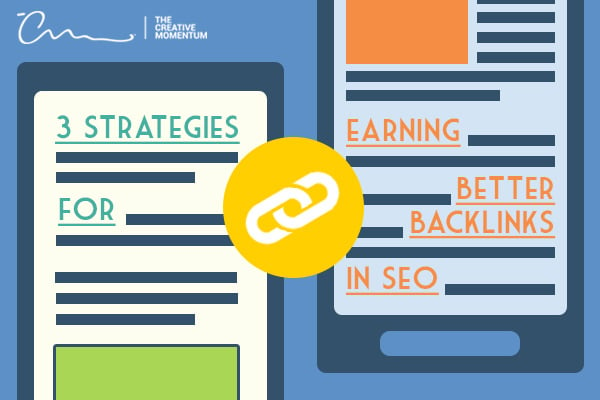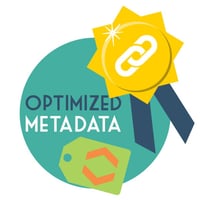
There was a time when backlinks were the bread 🍞 and butter 🧈 of search engine optimization. Back in the wild west days of SEO, it didn’t even matter if those backlinks were good ones as long as you had plenty pointing back to your website.
Backlinks are still important to search engine algorithms today. SEO has become more nuanced and complex since those early days, but backlinks still play an important role in how search engines index your content. According to Backlinko, the number one result on Google's results page for any given keyword posses an average of 3.8x more backlinks than rankings 2 through 10.
Now, authoritative, “good” backlinks are weighed more heavily than their counterparts, which one could buy, back in the day. The more high-quality and authoritative backlinks you have pointing back to your website, the better.
Getting better backlinks isn’t hard, but it does take some work. Here are three SEO backlinks strategy tips.
Backlinks Explained, and Why You Want Good Ones
Backlinks are inbound links from another website that point back to one of your webpages, blog posts, or other web content. Backlinks are like stamps of approval from other sites.
Backlinks are part of your link-building campaign, and SEO experts at MOZ say they’re an essential piece of your off-site SEO puzzle. High-authority backlinks coming from reputable brands bode well for your SEO efforts. You want lots of them to show search engines that you are reputable, informative, authoritative and trustworthy.
Here’s how you can get better backlinks.
Tip 1: Improve Your Page Speed Load Times
Sometimes, it’s the little things that matter most. Websites don’t like linking to content that takes forever to load. A quick win for better backlinks is to improve your site’s load speed(s).
Tips for improving page speed load times:
- Minimize redirects
- Optimize images
- Enable compression
- Simplify your backend code
- Limit JavaScript that blocks processes
- Utilize browser caching
- Use a CDN (content delivery network)
The quicker your website loads, the more likely other sites will point readers your way. Faster page load times are just good SEO.
Tip 2: Make Your Content Easier to Scan
Readers scan. It’s just what we do. Website visitors get jaded when faced with a wall of text. It’s your job to make your content easy to digest. The best way to do that is to make it easy to scan.
The Neilson Norman Group bluntly says most readers don’t read your content. They scan it. If something catches their eye, they’ll take a deeper dive and read more. That’s why you want to make your content scannable and attractive.
Here’s how:
- Use header tags (H1, H2, H3, etc.) to distinguish between sections
- Bold or highlight your hyperlinks to draw attention
- Bold important text or sentences
- Offer data visualizations in the form of infographics or images
- Use short sentences and vary paragraph lengths
- Include bulleted or numbered lists to break up content
Header tags, bold text, and short snappy paragraphs with a few bulleted lists will catch readers’ eyes. Scannable text is easier to understand than walls of text. Collect better backlinks with cleaner, better-organized content.
Tip 3: Optimize Your Meta Titles and Descriptions
Your website can look pretty on the page—given all that work you’ve done to create scannable content—but poorly-organized metadata is a blemish, and you don’t want it.
Consider what a search engine results page looks like after you’ve searched something. The titles and blurbs that accompany website URLs are metadata—meta titles and meta descriptions, to be precise.
What you do with your meta titles and descriptions can have a drastic impact on your click-through rates. Some companies forget to include a meta description, and others think a boring meta title is enough. Poor titles and descriptions mean that other websites might not even click through to your content, let alone consider a backlink.
Four things you can do to optimize your meta titles and descriptions:
- Actually include metadata
- Be clear and direct
- Attach a relevant or descriptive image
- Use schema markup to better present information
Make your meta titles clear, concise, and appealing. Be succinct and straightforward, and let your readers know what they’ll get when they click through to your website.
Improve Your Content for Better Backlinks
The three tips above are essential parts of any successful SEO backlinks strategy. In fact, backlinks are one of Google’s top three search ranking factors. They’re a big deal if you want to rank higher on search engine results pages.
Simply having backlinks puts you ahead of more than 60% of pages indexed by search engines. Why? Because 66.31% of pages don’t have any backlinks at all, according to a study done by Ahrefs of one billion web pages.
So, you’re already ahead of the game if you get a few good backlinks pointing to your content.
Remember, the better your content looks, and the easier it is to digest, the more likely people will link back to one of your pages. It’s that simple.


